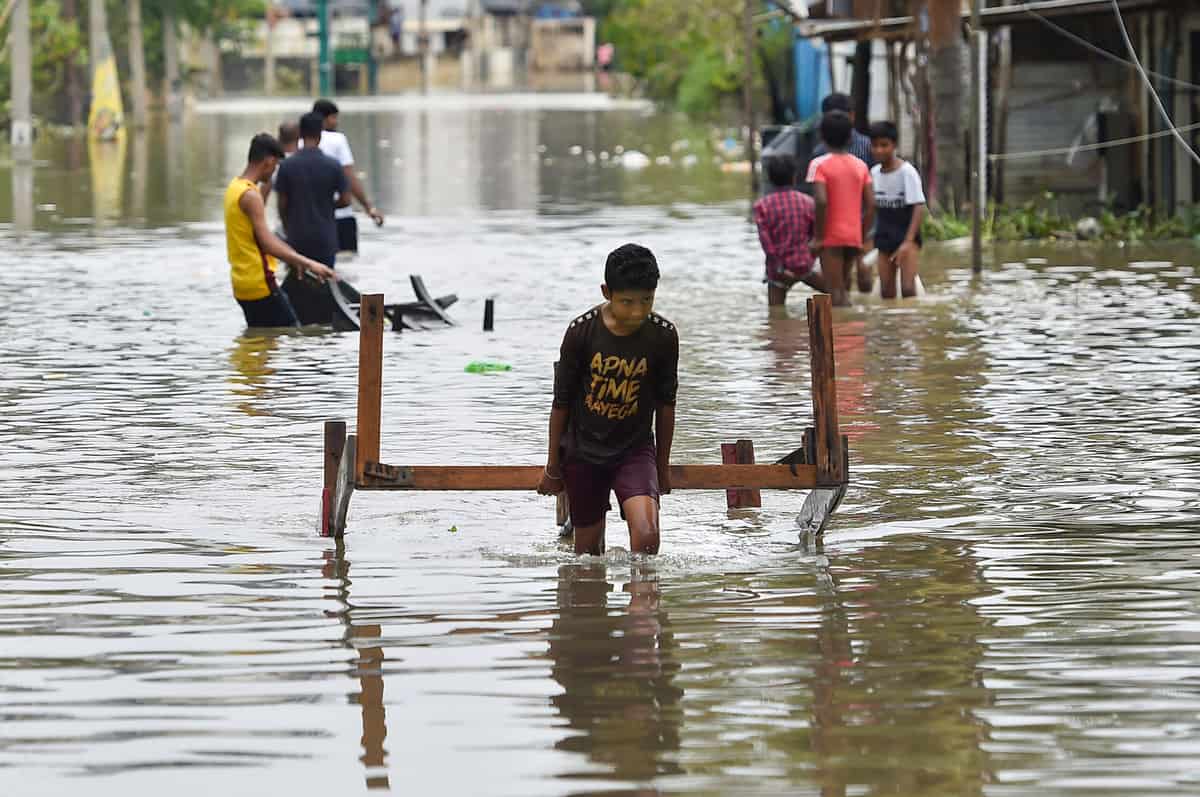
Bengaluru: When Bengaluru received unprecedented rainfall from August 30 to September 4 in 2022, the IT city sank under its crumbling infrastructure. The photos and videos of CEOs, tech company employees reaching their offices on tractors, JCB’s and families evacuated in boats made international headlines.
Ex chief minister Basavaraj Bommai, coming under attack from all directions, stated that Karnataka, especially its capital Bengaluru, has received the highest rainfall of the past 90 years.
The present Congress government is maintaining that the state has received less rainfall in the past 30 years. The government is facing heat from farmers for releasing Cauvery River water to Tamil Nadu. Deputy Chief Minister D.K. Shivakumar has stated that there is a shortage of drinking water in the state.
From the vast dry, parched lands of north Karnataka to the coastal regions, from hilly regions known as malnad areas to south Karnataka districts surrounding Bengaluru, all regions are experiencing either a flood or drought situation. Most of the areas in north Karnataka where the drought situation was the norm are witnessing floods resulting in loss of lives and property.
The fertile lands in the lap of the Western Ghats which received copious rainfall and boasted of evergreen forests experienced drought-like situations. Chief Minister Siddaramaiah announced on July 27, 2023, that the monsoon rain fury has claimed the lives of 38 persons since June 1, 57 houses were completely damaged, 208 severely damaged and 2,682 houses were partially damaged.
There was 56 percent deficient rainfall in June and in July 313 mm of rain was received which was 37 percent more than normal.
Dr. G.S. Srinivas Reddy, former Director at the Karnataka State Disaster Management Authority and presently senior consultant for the Revenue Department, told IANS that it is claimed that climate change is having other impacts also. But, it is difficult to link the situation to climate change by considering one season or year.
“In the last 10 years, from 2022, 2020, 2019, and 2018 Karnataka has faced a flood situation. Before 2018 from 2012 a drought-like situation prevailed in the state. The state faced drought conditions for almost 10 years till 2016. 2017 was a normal year and till last year it was a flood situation. Presently, the situation is turning towards drought,” he said.
Climate change impacts the state every other day in one way or the other. As a consequence, there won’t be rain for months, but then all the rain would be received in one day. This has become common and it is called frequency of extreme events. The amount of rain that is supposed to be received throughout the day will pour down in 15 to 30 minutes, Reddy stated.
Bengaluru is also witnessing this pattern. In 2018, the rains lashed the city for seven to eight days, and 400 tmc of water from the Cauvery river was released. In 2019 the same pattern was repeated. These events are occurring more now. The amount of rain that is supposed to fall in the entire season is pouring down in a matter of 10 days, he explained.
There is no high-range rainfall or low-range rainfall area. Low rainfall areas are witnessing high rainfall and where there was drought, there is heavy rainfall. Uneven distribution is commonly found. Because of this weather prediction has become a challenging and difficult job, Reddy stated.
He added that in Bengaluru itself the rainfall variability is more and it has been recorded. Bengaluru south had recorded 180 mm of rainfall while at the same time, Bengaluru north had received only 8 mm of rainfall.
Projects such as the Mekedatu Reservoir is proposed as a mitigation measure for climate change. Last year there was 400 tmc of excess water. It could not be stored and 200 tmc of water had gone into the sea. If the water had been harvested, the present conflict between Karnataka and Tamil Nadu would not have arisen, he said.
The cropping patterns, and water storage patterns should be changed. Different breeds and varieties have to be developed keeping the extreme weather in mind. The quantity of seasonal rainfall would be the same but it will come down in one day, Reddy said.
To check the consequences, adaptation, and mitigation measures have to be taken up, he stated.
